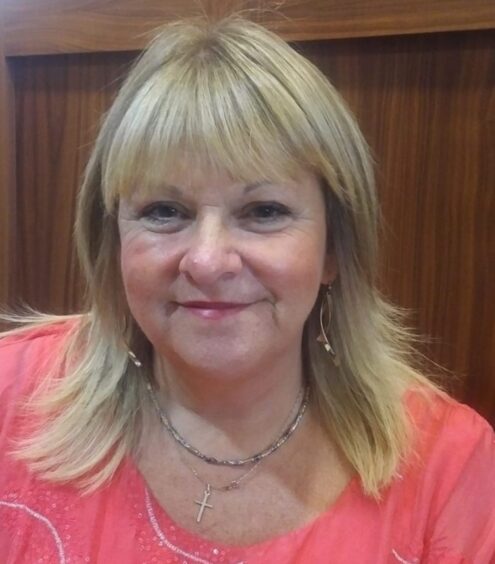
Private nurseries are in a “train crash” situation due to a funding gap which is causing them to increase childcare costs to make ends meet.
Last week, the Sunday Post reported on how families across the country are struggling with the increasing costs of childcare, as Westminster rolls out a new funded initiative to provide free childcare.
But nurseries cite increasing costs, lack of staff, changes in demand and a lack of funding from the Scottish Government as the reason why.
Currently in Scotland, children aged between three and four are eligible for 1,140 hours funded childcare. In some cases it also covers two-year-olds.
Sharon Fairley, nursery owner and CEO of the Scottish Private Nursery Association, said that one of the biggest issues the private sector is facing is that the money from the Scottish Government for the funding goes to the council first.She said: “The council set the rate they give us, but they don’t know our costs, they don’t know our overheads, which are much more than theirs, and they set what they believe is a sustainable rate to pass on to the partner providers.
“It’s not sustainable, it’s not the same and it’s underfunded and the council are retaining the money to put into their own services. It’s a total train crash. We said this five years ago. The penny is beginning to drop that what we said years ago, we envisioned this
“We’re having to cover the costs of the money that we’re not getting for the three to four-year olds. The only way we can increase costs is by putting it onto the under three years old and that’s what’s causing the biggest impact for families, we’re asking them to cover the shortfall that local governments are not paying us. I delayed putting my fees up at the moment because I’m so conscious of families, because some of them are saying ‘it’s not worth me working’.”
Private nursery owners were previously considering taking legal action due to the way in which funding is disturbed. Official data shows the number of private and third-
sector nurseries has fallen from 1,932 in 2018 down to 1,712 in 2023.
Moira Fell, director of Sweetie Brae Nursery in Strathaven, said that costs have increased due to demands, costs and rising wages. She said: “I’ve owned the nursery for 26 years and the changes over the years, the job just isn’t the same anymore as it used to be. The demands on the staff and managers, it’s just far too much for one person and we could have another two or three people if we had the finance. Our problem in the private sector is that many staff have gone to the council because of the better rates.
“We have ratios and we have to staff the children. We’ve had to put our rates up the last couple of years.
“A lot of other places we know are at around £70 and over for a day.”
Marc Kelly, director of Puddleduck in Glasgow, said running the nursery is a passion project which was started 25 years ago by his mother and they had increased prices in January out of necessity.
He said: “We haven’t raised childcare costs in seven years. Every single penny we make, we invest it back into the nursery to make it as good a place as it can be.
“In the last three years, we’ve seen a 46% rise in salary and the rent has been doubled. So we’ve never raised the prices, as our parents come from an underprivileged area, parents don’t have the extra money to give us.”
Cara Stevenson, who leads GMB Scotland’s women’s campaign unit, said the cost and limited availability of childcare, whether in private or council run nurseries, is needlessly forcing far too many skilled women out of Scotland’s job market.
She said: “With more parents needing to work, finding available spaces is often the first hurdle.”
A Scottish Government spokesperson said: “High quality early learning and childcare that is flexible, accessible and affordable is critical to giving children the best possible start in life – which is why in 2024-25 we will invest approximately £1 billion to allow local authorities to provide 1,140 hours a year of high-quality funded ELC to all eligible children.”
Meanwhile, Scottish Labour has said families are “being failed” as the number of childminders has almost halved in just over a decade.
Figures released to the party show the number of childminders dropped from 6,274 in December 2012 to 3,530 in December 2022.
Scottish Labour children’s spokesman Martin Whitfield said: “The erosion of vital childcare in our communities is worrying.”
Childcare is now £60 a day – it’s unaffordable
Tamara Beattie, a care worker from Fife, whose daughter attends a private nursery one day a week, says that she has seen an increase in prices and asked why.
She said: “I wouldn’t have been able to afford putting her in a full-time private one, unless they have the funding for the 33 hours as not all of them do.
“The fees for our nursery have increased. I couldn’t tell you exactly what they have increased by, but I just looked at the invoice for 10 hours and 15 minutes. It’s £200 which is for every week.
“I think it started at £40 a day and I think it’s now about £60 a day.
“I asked the nursery why they had increased their fees, and they were really nice and they said they need to cover the staff’s wages because a lot of them are leaving and they are not getting paid enough. They know that they can get paid more in a supermarket. They are having to up their wages to see if they can get more people in. They don’t have enough staff to cover the child ratio because the child ratio is changing.
“They are losing a lot of kids as well because a lot of people are going to childminders, and there aren’t a lot of them either and people are finding that the staff ratio for the kids isn’t great and they want more one-to-one care.
“I think they get less funding from the council for the less spaces they fill so that’s another reason for the increased costs.”

Enjoy the convenience of having The Sunday Post delivered as a digital ePaper straight to your smartphone, tablet or computer.
Subscribe for only £5.49 a month and enjoy all the benefits of the printed paper as a digital replica.
Subscribe © Supplied by Scottish Private Nur
© Supplied by Scottish Private Nur